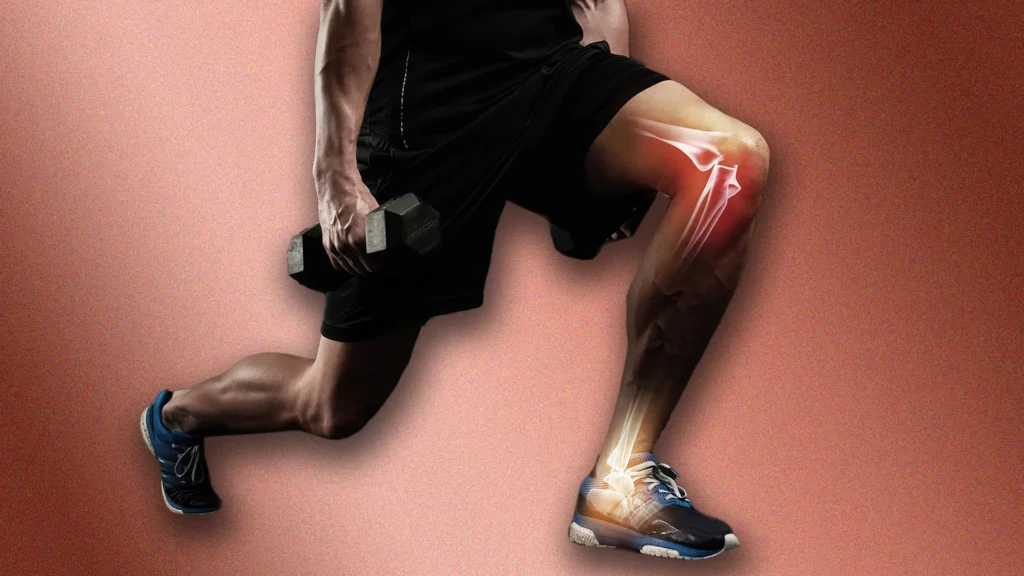
Prioritizing Joint Health in Fitness Plans: A Key to Long-Term Success
When we talk about fitness, our minds often go straight to building muscle, losing fat, or improving endurance. But there’s one crucial element that’s often overlooked—joint health. Your joints are the foundation of every movement, and when they’re not functioning properly, your workouts suffer, your progress slows, and pain can take over.
By prioritizing joint health in your fitness plan, you’re not only preventing injuries but also setting yourself up for sustainable, long-term success. This article explores why joint care matters, how to protect and strengthen your joints, and how to adjust your training to keep your body moving smoothly for years to come.
Why Joint Health Matters
Joints are the connections between bones that allow for movement and flexibility. They’re supported by cartilage, ligaments, tendons, and muscles. When one part of this system weakens, your range of motion decreases, your body compensates, and injuries can occur.
Here’s why you should pay attention to your joint health:
- Injury Prevention: Weak or stiff joints are more prone to sprains, strains, and tears. Even a minor injury can derail your progress for weeks or months.
- Improved Performance: Healthy joints move more freely, allowing you to lift better, run faster, and train harder with less risk.
- Long-Term Mobility: Poor joint care today can lead to arthritis, chronic pain, or mobility limitations later in life.
Common Causes of Joint Issues in Fitness
Many people develop joint pain or injuries without realizing that their fitness habits may be the cause. Common culprits include:
- Poor exercise form
- Lack of warm-up or cool-down
- Overtraining or high-impact exercises
- Inadequate recovery time
- Weak surrounding muscles
- Neglecting flexibility and mobility work
How to Protect Your Joints During Exercise
The good news? You can take steps to keep your joints strong and pain-free. Here are some essential strategies:
- Warm Up Properly Before jumping into any workout, spend at least 5–10 minutes warming up. Use dynamic stretches and light cardio to increase blood flow and loosen up your joints. This primes your body for activity and reduces injury risk.
- Use Proper Technique Always focus on form over weight or speed. Poor mechanics put unnecessary stress on your joints, especially the knees, shoulders, hips, and spine. If you’re unsure about form, consider working with a coach or using video tutorials.
- Strengthen Supporting Muscles Strong muscles help protect joints. Focus on balanced strength training that targets both large muscle groups and stabilizers (like glutes, core, rotator cuff, etc.). Don’t neglect weaker areas, and be sure to train both sides of your body evenly.
- Incorporate Low-Impact Movements Mix high-impact activities like running or jumping with lower-impact options such as swimming, cycling, rowing, or elliptical training. These allow you to maintain fitness while giving your joints a break.
- Stretch and Improve Mobility Flexibility and mobility exercises help maintain joint range of motion. Incorporate static stretching after workouts and consider mobility drills using foam rollers, bands, or massage tools to reduce stiffness and improve movement.
- Recover Intentionally Joints need time to recover, just like muscles. Make rest and recovery part of your fitness plan. Get enough sleep, stay hydrated, and include rest days or active recovery days each week.
Joint-Friendly Exercises to Include
Certain exercises are especially effective at strengthening the muscles around joints while minimizing risk. Try adding these to your weekly routine:
- Bodyweight squats: Strengthen knees and hips
- Glute bridges: Support hips and lower back
- Resistance band exercises: Build stabilizer muscles
- Wall sits: Improve knee and hip strength without impact
- Yoga or Pilates: Enhance mobility, flexibility, and joint control
Adjusting Your Workout Plan for Joint Health
You don’t need to avoid challenging workouts, but you should be smart about how you train. Here’s how to make your program more joint-friendly:
- Periodize your training: Vary intensity and volume over time to avoid overstressing your joints.
- Limit repetitive movements: Avoid doing the same motion every day, which can lead to overuse injuries.
- Focus on control: Prioritize slow, controlled movements over fast or explosive ones, especially if you have a history of joint pain.
- Listen to pain signals: If a movement causes sharp or lasting pain in a joint, stop and reassess. Pain is a signal, not a challenge to overcome.
Nutrition for Joint Health
What you eat plays a major role in joint health. Certain nutrients help build cartilage, reduce inflammation, and support recovery:
- Omega-3 fatty acids: Found in fish, flaxseed, and walnuts; help reduce joint inflammation
- Collagen: Supports cartilage and connective tissue
- Vitamin C: Aids in collagen production and reduces oxidative stress
- Vitamin D & calcium: Support bone health
- Turmeric and ginger: Natural anti-inflammatory properties
Drinking plenty of water is also crucial—dehydration can reduce the lubrication in your joints, increasing friction and pain.
Supplements to Consider
If you’re struggling with joint discomfort or want extra support, certain supplements may help. Always check with a healthcare provider before starting any new supplement. Common options include:
- Glucosamine and chondroitin
- Collagen peptides
- Fish oil (omega-3s)
- MSM (methylsulfonylmethane)
- Turmeric extract (curcumin)
Recognizing and Managing Joint Pain
Not all joint pain is serious, but it shouldn’t be ignored. Pay attention to:
- Persistent swelling
- Popping or grinding sensations
- Limited range of motion
- Pain that worsens with activity
If pain continues for more than a few days or worsens with use, it may be time to consult a doctor or physical therapist. Early intervention can prevent long-term issues.
Training with Existing Joint Conditions
If you already have a condition like arthritis or tendonitis, it’s still possible to stay active with the right approach:
- Choose low-impact exercises like swimming, walking, or resistance bands
- Use lighter weights with higher reps
- Prioritize flexibility and strengthening exercises
- Ice joints after exercise to reduce inflammation
- Work with a professional to create a customized plan
Final Thoughts
Your joints are essential to everything you do in fitness and daily life. Taking care of them now can prevent pain, extend your active years, and help you achieve better long-term results.
Fitness isn’t just about pushing your limits—it’s also about sustainability. So, whether you’re a beginner or a seasoned athlete, make joint health a central part of your training plan. Your future self will thank you for it. For more insights on recovery and rest, check out Sleep Optimization for Fitness Results, as rest is an essential part of your recovery process.





